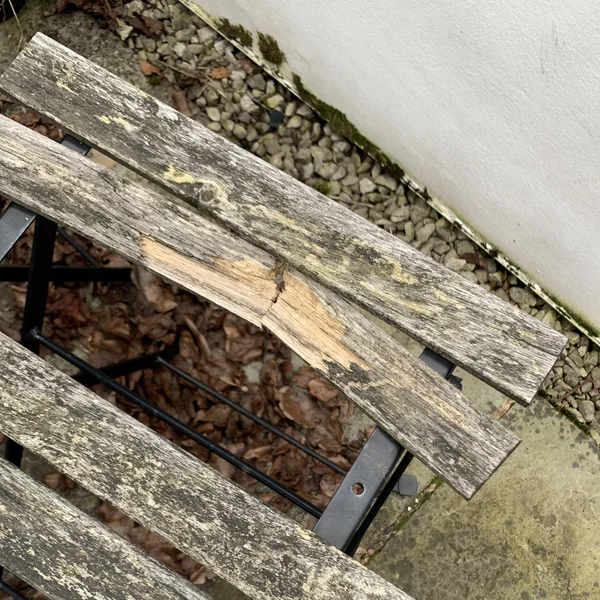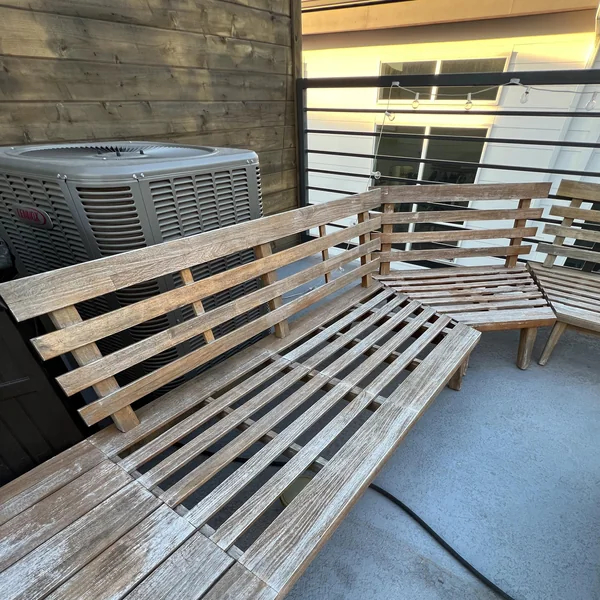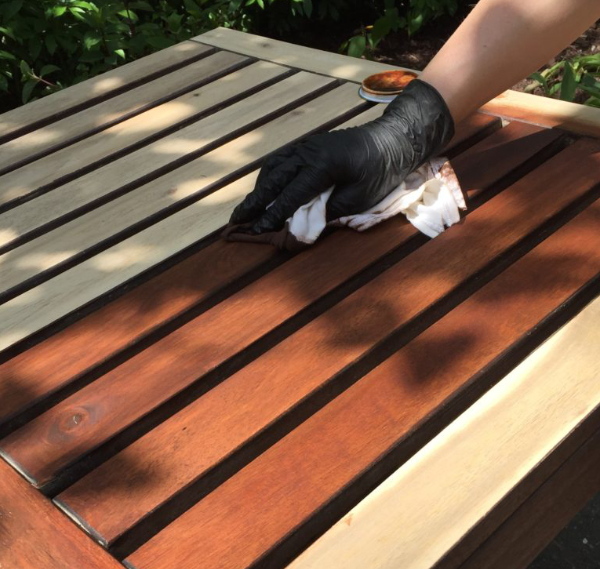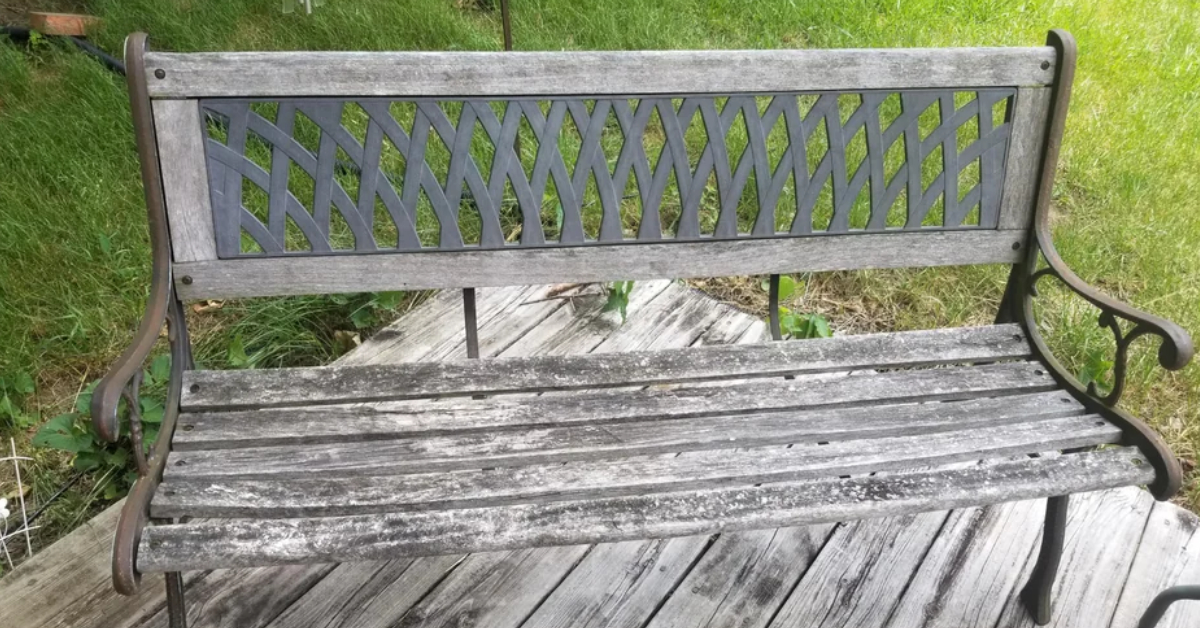How to Restore Wooden Garden Furniture – Step-by-Step & Guide
How to restore wooden garden furniture is a question often wondered at the start of Spring after the furniture has endured a long hard winter.
Wooden garden furniture adds a touch of class and elegance to a garden. However, over time, it can become weathered and damaged from exposure to the elements.
As a DIY project furniture restoration is very achievable even for people will relatively little DIY experience.
By opting to restore your wooden garden furniture you can not only enhance the aesthetic appeal but you are also choosing a more sustainable choice rather. Restoration can give you self-satisfaction rather than throwing away and buying new pieces.
In this blog post, we’ll take you through the step-by-step process of restoring wooden garden furniture. We’ll cover everything from the materials you’ll need to the finishing touches. Whether you’re an experienced DIYer or a novice, our guide will help you to bring your wooden garden furniture back to life.
Restoring Wooden Garden Furniture – What materials will I need?
Thankfully, restoring your wooden garden furniture should not require any heavy-duty or expensive bits of equipment or materials.
Most items can be picked up cheaply at your local DIY store or online.
Please see below for a basic shopping list:
- Sandpaper – As with most sandpapering jobs you will need various grades in order to achieve the best finish. Initially, it’s best to use coarse-grit sandpaper (80-grit) to remove any old finish or paint, then progress to a finer grit (120-grit, 220-grit) to smooth the surface.
- Wood cleaner – A wood cleaner will help to remove dirt, grime, and stains from the furniture. There are various types of wood cleaners available on the market, but you can also make your own using a mixture of warm water, white vinegar, and dish soap.
- Wood filler – If your furniture has cracks, splits, or holes, you’ll need to use a wood filler to repair them. Wood fillers come in various colours to match the wood, and they can be sanded and stained once they dry.
- Stain or paint – a stain or paint not only improves the look of your furniture but also protects it from the elements making it a crucial step in the restoration process. Depending on the look you are trying to achieve you can opt for a natural finish or a more vibrant colour.
- Brushes – You’ll need a few different brushes for the restoration process. A stiff-bristled brush can be used to clean the furniture, while a foam brush can be used to apply the wood filler or stain/paint.
- Safety equipment – Safety goggles, gloves, and a dust mask are essential when sanding and applying chemicals.
First steps – Assessing the furnitures condition
Before you begin restoring your wooden garden furniture, it’s essential to assess its condition to determine the type of restoration it needs. Furthermore, it will help you identify if your furniture is in good enough condition to be used in the future.

By following these simple steps you will be able to easily assess the condition of your wooden furniture.
- Check for cracks and splits – Look for any damage to your wood such as cracks or splits. If the damage is minor, you may be able to repair it using wood filler. However, if the damage is extensive, you may need to replace the affected pieces.
- Examine the finish – Check the finish of the furniture to see if it’s peeling, cracking, or fading. If the finish is in good condition, you may only need to sand it down and apply a new coat of stain or paint. If the finish is damaged, you may need to strip it down completely and start from scratch.
- Identify the type of wood – Identify the type of wood your furniture is made of. Different types of wood require different restoration techniques, so it’s essential to know what you’re dealing with. You can usually identify the type of wood by looking for its grain pattern or by checking the manufacturer’s label.
- Consider the age of the furniture – If your furniture is old, it may have some sentimental or historical value. In this case, you may want to preserve the original finish or look for a restoration technique that’s sympathetic to the furniture’s age.
By assessing the condition of your furniture, you can determine the appropriate restoration technique and avoid making any irreversible mistakes. Once you’ve assessed the furniture, you can move on to the next step in the restoration process: preparation.
How to restore wooden garden furniture – Patience & Preparation
As with any DIY project, your end result will be determined by the quality of your preparation.
Although it is easy to want to push forward with the project, you will thank us when you take a little extra time during this phase.

Use the checklist below as a general workflow:
- Clean the furniture – Start by cleaning the furniture using a wood cleaner and a stiff-bristled brush. This will remove any dirt, grime, or stains that may have accumulated on the surface. Rinse the furniture with water and let it dry completely.
- Sand the furniture – Once the furniture is dry, use coarse grit sandpaper (80-grit) to remove any old finish or paint. Sand with the grain of the wood, and be careful not to sand too hard or too long in one spot, as this can cause unevenness. Progress to a finer grit (120-grit, 220-grit) to smooth the surface.
- Remove dust – Use a tack cloth or a microfiber cloth to remove any dust from the furniture’s surface. Dust can ruin the finish of your staining and painting if you don’t completely remove it.
- Repair any damage – If your furniture has cracks, splits, or holes, use wood filler to repair them. Apply the wood filler using a foam brush, and let it dry completely before sanding it down.
- Sand the wood filler – Sand the wood filler down using fine-grit sandpaper (220-grit) until it’s smooth and flush with the surface of the furniture.
- Protect surrounding areas – Cover any surrounding areas that you don’t want to get stained or painted, such as the ground or nearby plants.
By taking your time with the preparation you will reap the rewards with the finished article.
How to restore wooden garden furniture – Staining or painting
The staining or painting phase of the restoration process is the most exciting part as your furniture will really begin to come back to life.
- Choose your stain or paint – Choose a stain or paint that’s suitable for outdoor use and complements the natural beauty of the wood. We’d highly recommend choosing the best quality paint possible as it will make a world of difference in the end result. Try something like the Al Fresco range from Frenchie.
- Apply the first coat – Use a foam brush to apply the first coat of stain or paint. Work with the grain of the wood, and be careful not to leave any drips or uneven spots. Let the first coat dry completely before moving on to the next step.
- Sand between coats – Sand the furniture lightly using fine-grit sandpaper (220-grit) between coats. This will help to remove any rough spots and ensure that the subsequent coats adhere to the surface properly.
- Apply subsequent coats – Apply subsequent coats of stain or paint until you achieve the desired level of coverage. Make sure to let each coat dry completely before applying the next one.
- Apply a protective sealant – Once you’ve applied the final coat, apply a protective sealant to the surface of the furniture. A sealant will help to protect the wood from the elements and extend the life of the finish. Follow the manufacturer’s instructions for application and drying times.
- Let it dry – Allow the furniture to dry completely before using it. This may take a few days depending on the weather and the type of stain or paint you used.
Final Steps – Maintenance
Restoring wooden garden furniture can be extremely rewarding which is why ongoing care and maintenance should be undertaken to maximise the longevity of the furniture.

Here are a few tips to get the most out of your newly restored furniture:
- Regular cleaning – Clean your furniture regularly with a wood cleaner and a soft-bristled brush. This will remove any dirt or grime that may have accumulated on the surface.
- Protect from the elements – Protect your furniture from the elements by covering it with a waterproof cover when not in use. This will help to prevent water damage and extend the life of the finish.
- Avoid harsh chemicals – Avoid using harsh chemicals or abrasive cleaners on your furniture as they can damage the finish.
- Refinish as needed – If your furniture starts to look faded or worn, consider refinishing it. You can follow the same steps as you did during the restoration process to bring it back to life.
- Store indoors during winter – If you live in an area with harsh winters, consider storing your furniture indoors during the winter months. This will help to protect it from snow, ice, and freezing temperatures.
By following these simple maintenance tips, you can keep your wooden garden furniture looking great for many years to come.
Now that you know how to restore wooden garden furniture you can embark on other DIY projects. Check out our full range of restoration guides for further information.


Leave a Reply